If the eaves of your house are sporting a beautiful assortment of icicles, you may be well on your way to the damaging effects of an ice dam. “Most people think that icicles hanging off the gutters look pretty, but it’s usually a bad sign,” warns Normandy Designer Maury Jones. “A roof with a collection of icicles is a prime candidate for ice damming.”
An ice dam is a ridge of ice that forms at the edge of a roof. Often, the source of the melting snow is several feet away from the eaves, and is due to heat escaping from the home into the attic; either because of poor insulation or lack of ventilation which warms the attic space. The warm attic melts the snow and water runs off the roof to a frozen gutter, where it re-freezes. As the process repeats, the ice builds up, right back into the shingles.
“A large amount of heavy, wet snow like we’ve recently experienced, gives an ice dam plenty of opportunity to form, and cause you trouble,” notes Maury. Ice dams can cause serious damage to your home’s exterior, but they can cause even more headaches for the interior. “If you have noticed wetness from the ceiling or have water running down the inside of the wall, you very likely have an ice dam.”
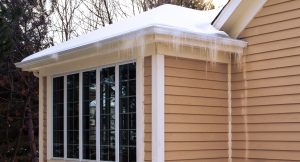
Proper insulation and ventilation may be the only permanent fix, but there are some steps you can take now to minimize your risk of ice dams. A snow rake is a tool that will allow you to clear the snow off the bottom few feet of your roof, back to where the wall meets the roof. This may minimize your risk of an ice dam, at least in the short term.
Insulating your attic is a smart investment no matter the season. If you are contemplating more sweeping changes to your home, you can set up a time with Maury to talk about the possibilities. You can also learn more about additions, kitchens or other remodeling projects at an upcoming workshop. Check out the photo gallery or follow Normandy Remodeling on Facebook and Instagram for even more home tips and inspiration.



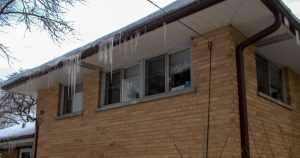
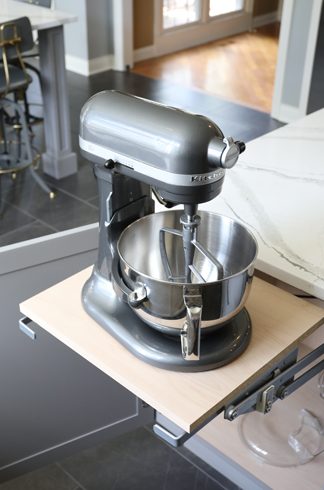
 Countertop Height is Key– Depending on the type of baking you do most often, you may want to consider a custom height countertop. Tailored to match your own height, this will ensure you are completely comfortable when working, whether you’re kneading dough or decorating 3-dozen cookies. “An island countertop that’s 2-3” lower or higher than the rest of the kitchen, may make a world of difference,” says Liz. “It creates one large continuous work and prep space while keeping the rest of your surfaces at a standard height.”
Countertop Height is Key– Depending on the type of baking you do most often, you may want to consider a custom height countertop. Tailored to match your own height, this will ensure you are completely comfortable when working, whether you’re kneading dough or decorating 3-dozen cookies. “An island countertop that’s 2-3” lower or higher than the rest of the kitchen, may make a world of difference,” says Liz. “It creates one large continuous work and prep space while keeping the rest of your surfaces at a standard height.”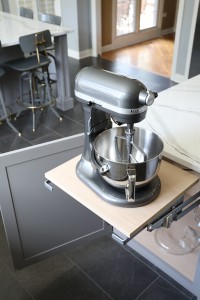 Storage Savvy– Eliminate the struggle and clatter when accessing cookie sheets by going to vertical storage. Well placed drawers for flour, sugar, measuring cups, and so on, create a baking zone, giving you easy access to everything you need. You may even want to splurge on a stand mixer lift with soft closure for your KitchenAid Mixer. “Keep in mind the stand lift will take up a full cabinet, so you’ve got to know you really will use it,” Liz points out. “If you’ve got the space for it though, it is a baker’s dream. Your back will definitely thank you.”
Storage Savvy– Eliminate the struggle and clatter when accessing cookie sheets by going to vertical storage. Well placed drawers for flour, sugar, measuring cups, and so on, create a baking zone, giving you easy access to everything you need. You may even want to splurge on a stand mixer lift with soft closure for your KitchenAid Mixer. “Keep in mind the stand lift will take up a full cabinet, so you’ve got to know you really will use it,” Liz points out. “If you’ve got the space for it though, it is a baker’s dream. Your back will definitely thank you.”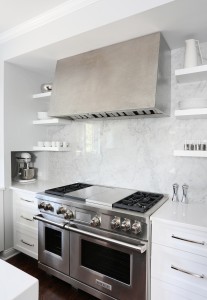 The Right Oven (or Two) -Obviously, the oven is a baker’s top priority. “You’ll want to invest in one that offers additional features – like convection and steam options – so you can choose the baking/cooking mode that best suits each recipe,” recommends Liz. If you have space for it, double ovens let you bake twice as much in the same amount of time.
The Right Oven (or Two) -Obviously, the oven is a baker’s top priority. “You’ll want to invest in one that offers additional features – like convection and steam options – so you can choose the baking/cooking mode that best suits each recipe,” recommends Liz. If you have space for it, double ovens let you bake twice as much in the same amount of time.